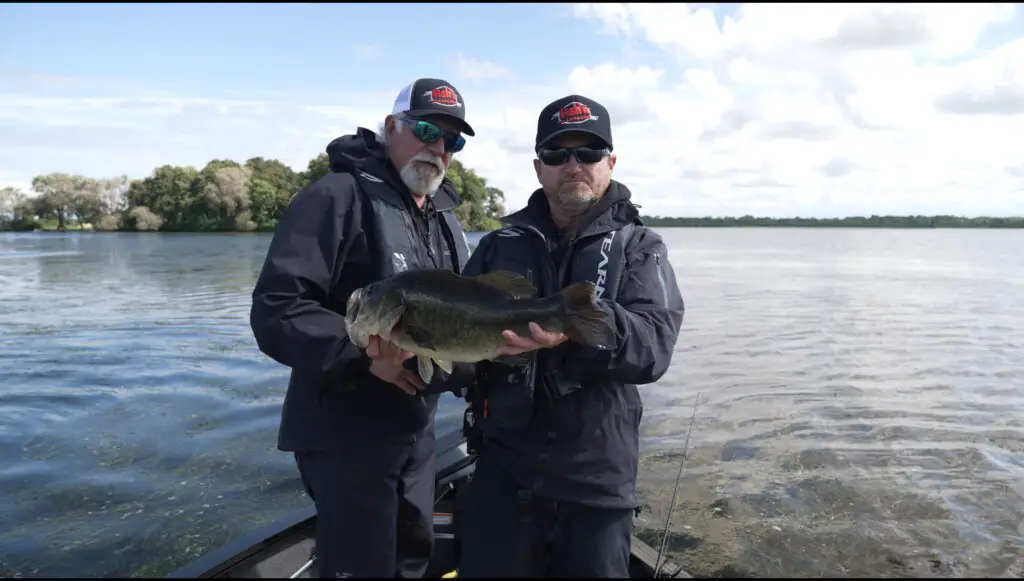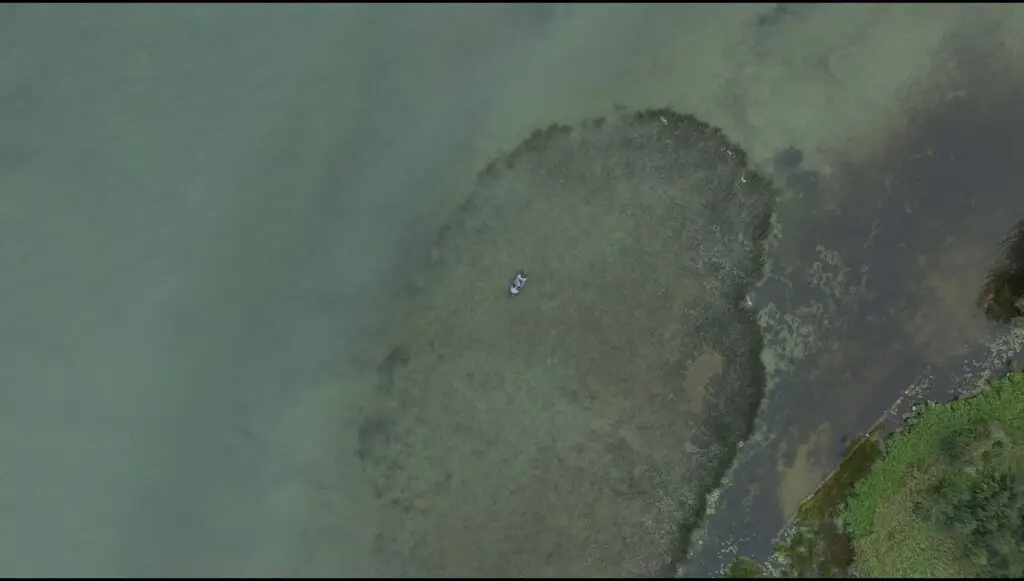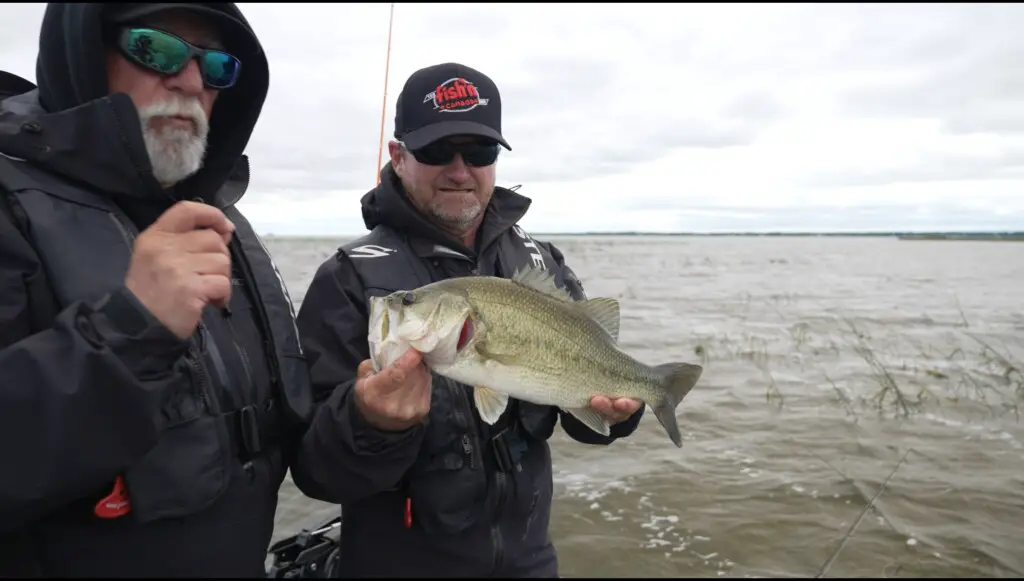With an article and show title including “The Lifeline Of Our Fish”, you can probably surmise that this just may be THE most important message of the entire season. We hit upon some eye-opening and even scary facts of present-day fish-related matters, and hopefully, we’ll also educate you along the way.
We look at this episode this way; if WE (Ang and Pete) are all ears and on the edge of our seats to learn more, we’re pretty sure you will be too.
Our subject is one of the scariest threats that we face in specific waters in Canada. It’s an invasive group of fish called Asian Carp, which includes the Bighead Carp, the Black Carp, the Silver Carp, and, in this show’s case… the Grass Carp. Trust us, this threat is REAL!

Jumping Silver Carp (Photo by the Invasive Carp Regional Coordinating Committee)
In this episode, we take you to the Grand River which feeds into Lake Erie where we sent our crew to tag along with members of the Invasive Species Center as they tested the waters of the Grand, looking for any and all things invasive.
Studies like these are crucial to learning about possible threats to our environment, and then finding methods to counteract their invasion.
BUT, for those of you who just love watching fishing, no need to panic. We also show you just how critical weed growth is to our underwater ecosystems and especially to our fish… that’s both baitfish and game fish… and in this episode’s case, we’re gonna be working on some Largemouth Bass! Let’s face it, when talking about weed growth, there probably isn’t a better fish species than the Largemouth Bass to put into the equation. Good weed growth equals zooplankton and phytoplankton generation, which equals great baitfish populations, which ultimately equals excellent Largemouth Bass habitat.

GRASS CARP
In a nutshell, Grass Carp are definitely NOT native to our Canadian waters.
They’re big… like up to 45 kg or close to 100lbs! They eat up to 40 percent of their body weight every day… on a hundred-pounder, that’s about 40 lbs of food… EVERY DAY!

And that food consists mostly of aquatic plants AKA the weeds our fish need, and they also can consume insects, small fish, earthworms, and other invertebrates in the absence of aquatic vegetation.
And here’s a beauty for you, Grass carp can only digest about half of the plant material they consume each day – the remaining is expelled into the water, which, in turn, promotes algal bloom… NOT GOOD!
So… how did these relentless aquatic grazers get here…
According to the Invasive Species Centre website, “Asian carps were introduced to the Southern U.S. in the late 1960s and 1970s for use as biological control in aquaculture facilities based on their specific diets. Flooding events allowed at least three of the four species (Bighead, Silver, and Black carps) to escape these facilities and eventually make their way into the Mississippi River Basin. The spread of Grass Carp has largely been the result of stocking for the purposes of aquatic vegetation control.”
While we’re taking a dive deep into the Grass Carp wormhole during the show, we also took a jaunt eastward to see how Ang and Pete deal with fishing around different types of weeds and make the point as to just how important aquatic vegetation is to fish and fishing

As Ang just said with that last Bass, without the weeds, we have no fish… plain and simple. That Largemouth was 100 percent reliant on weed growth.
The Need for Weeds
In this show, we started out by fishing a thick weedline, adjacent to a deep drop-off, with close proximity to standing reeds. This is pretty much gold when it comes to Largemouth habitat. But, with some changing weather conditions on the way, we decided to show you some other weed types that bass use.
Our new area was much more protected from the wind and the main river current. It’s also shallower, so the common denominator here is the weed growth… This time it’s lily pads, some reeds and a bit of coontail.

When you compare the difference of this second area to our first spot, you will start to see how diverse Largemouth habitat can be. A deep weedline is SO much different from a shallow pad bed… a world of difference.
After scouring the shallow pads, our next move was to one of our favourite weed types. It was a gigantic pencil reed bed in a strong west wind. This is the type of fishing that we cut our teeth on in our tournament days. Here we got out the jigs and or plastics, and pitched, flipped and cast to as many good-looking areas as we could.

Standing reed or cane patches are such an important part of the underwater ecosystem. Like most weed types, this mini “forest” of tough, tall-standing plants attracts every type of shallow, underwater creature in spring, summer, fall and probably even winter.
So, as in most typical fishing days and weather changes, our little foul blow up finished, so we decided to return back to our starting spot at the beginning of the show. That weed edge was the most consistent and reliable that we’d found on the shoot. Thank god we did because as we were transitioning from weed patch to weed patch, Pete dropped his 6” soft stick-bait into a clump of milfoil on the edge of a break, and proceeded to boat a gorgeous Largemouth that was well over 4 lbs… an extremely respectable fish for sure.

So, what did we learn from this show?
Well, first and foremost, we now all know that weed growth… aquatic vegetation, whatever you want to call it, is absolutely essential to our beloved animals called fish.
And secondly and equally as important, invasive species like the Grass Carp can and will, if left alone, annihilate that beautiful underwater greenery until there’s nothing left… which ultimately includes those beloved fish like the Largemouth Bass
What can we all do about this?
We can first learn how to identify not only Grass Carp, but all 4 Asian Carp species by going to the Asian Carp website, and downloading their reporting guide.
And thus being armed with the correct imagery and knowledge, we as anglers can be ready to take action, In case the inevitable happens. And that of course, is encountering one of these highly invasive creatures.
Let’s all work together and help keep our world-class sport-fishery – world-class!
Learn more!
Visit www.asiancarp.ca to learn more about the threat of Grass Carp!




